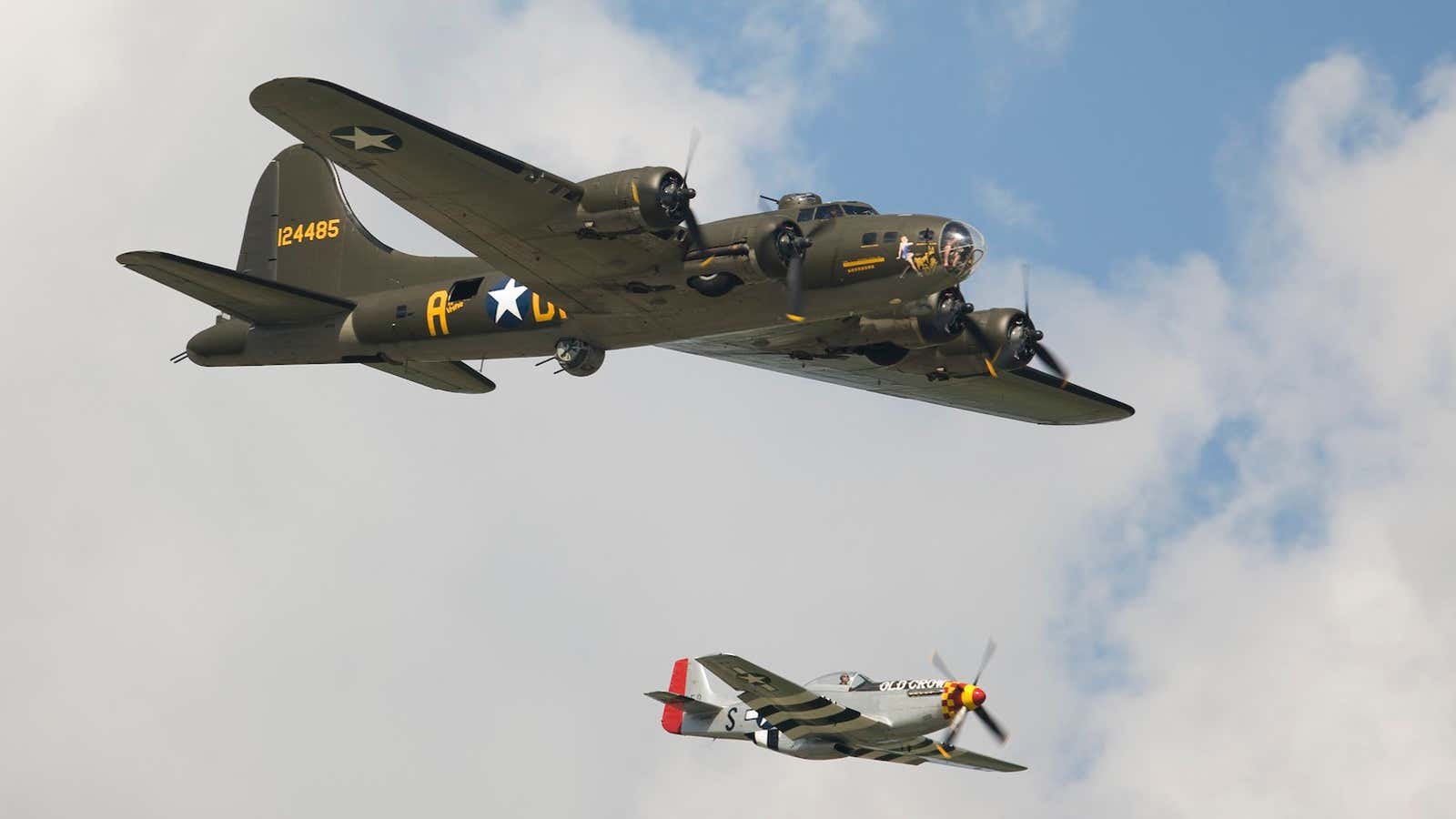Some nights, my father woke up screaming. My siblings and I could hear him on the other side of the thin wall that separated our bedrooms, his yelps subsiding as my mother calmed him.
His story has come back to haunt me this week, amid reports that the United States inadvertently killed two Western hostages in a drone strike in Pakistan. The tragedy reminds me of my father’s warnings about the futility, imprecision and dubious morality of waging war from the air.
My father was a bomber pilot in World War II, flying B-17s over Germany. He served with skill and valor, helped write an Army Air Force training manual and earned a drawer full of medals and ribbons. Like others of that modest generation, my father rarely spoke about his combat adventures.
That began to change during the Vietnam War, which he found confusing and pointless—so unlike his own time in service. My father was especially troubled by the tonnage being dropped by the B-17’s successor, the B-52, against North Vietnam.
The air attacks reminded him of his days over Germany’s industrial heartland—in particular, of his multiple raids on a ball-bearing plant in Schweinfurt, in 1943. His first raid caused little damage. But the second, on Oct. 14, caused much more damage—to both sides. Of the 291 US bombers involved, only 33 returned unscathed. A full 650 crew members did not make it back at all.
My father remained angry about those losses for the rest of his life.
What really bothered him, though, was his conviction that most of the bombs his squadron dropped came nowhere near their targets. “Forget all the talk about precision bombsights and surgical strikes,” he said. “We knew those bombs were falling on innocent men, women and children. I’ll never get over that.”
His impression was later confirmed by the Strategic Bombing Survey, a study ordered by the White House in 1944 and conducted by, among others, economist John Kenneth Galbraith. The survey concluded that, despite killing 305,000 people and wounding 780,000, the bombing had little effect on Germany’s war effort. As for Schweinfurt, the study concluded, “There is no evidence that the attacks on the ball-bearing industry had any measurable effect on essential war production.”
Sure, drone strikes are different. They involve real-time video that allows explosives to be guided directly to their target. But the problem is that an operator in Nevada does not know for certain if the target is the right one, much less who is inside or next door.
In figures compiled by three organizations, and cited this week by the New York Times, 522 American drone strikes have killed 3,852 suspected members of terrorist organizations since 2002. They have also killed 476 civilians.
In Pakistan, where most American drone strikes take place, they have only deepened local hatred of the United States. In a 2013 Pew Research Center poll, for instance, only 10% of Pakistanis had a favorable opinion of the US. A major issue was drone strikes, opposed by 68% of survey respondents. A year later, Pew found even higher levels of opposition in 27 other countries.
Drone attacks depend heavily on intelligence, which can never be perfect without ground-based observers. An electronic intercept might indicate that a bad guy is in a building, but it doesn’t determine whether his wife, children, neighbors and wedding guests are there too.
What makes drone use attractive to U.S. policy makers, of course, is that it is a “clean” way to blow things up and kill people—distant, impersonal and safe (for Americans). Drones keep US forces out of harm’s way and are cheaper than a full-blown military presence.
That was once the appeal of the strategic bombing of World War II, too. “The bomber will always get through,” argued Britain’s pre-war Prime Minister Stanley Baldwin in 1932, when air bombardment was coming into vogue. The targets of that era included war-material factories and military installations, but most victims were civilians. And the reality is that bombing was still less precise and less effective than what we now call, often dismissively, boots on the ground.
The allure of low-cost air war endures. Polls show that most Americans support it, and only a few liberal and libertarian members of Congress have denounced it. But drone technology is now available to just about any rogue country or aggrieved group in the world these days, and it’s entirely possible that one or another of them will start sending armed drones against the U.S. before long. Then, perhaps, we can have a national conversation about their use.
As my father knew, the dream of delivering death cheaply and efficiently from the skies cannot be realized. It is a nightmare, from which we can only wake up screaming.
